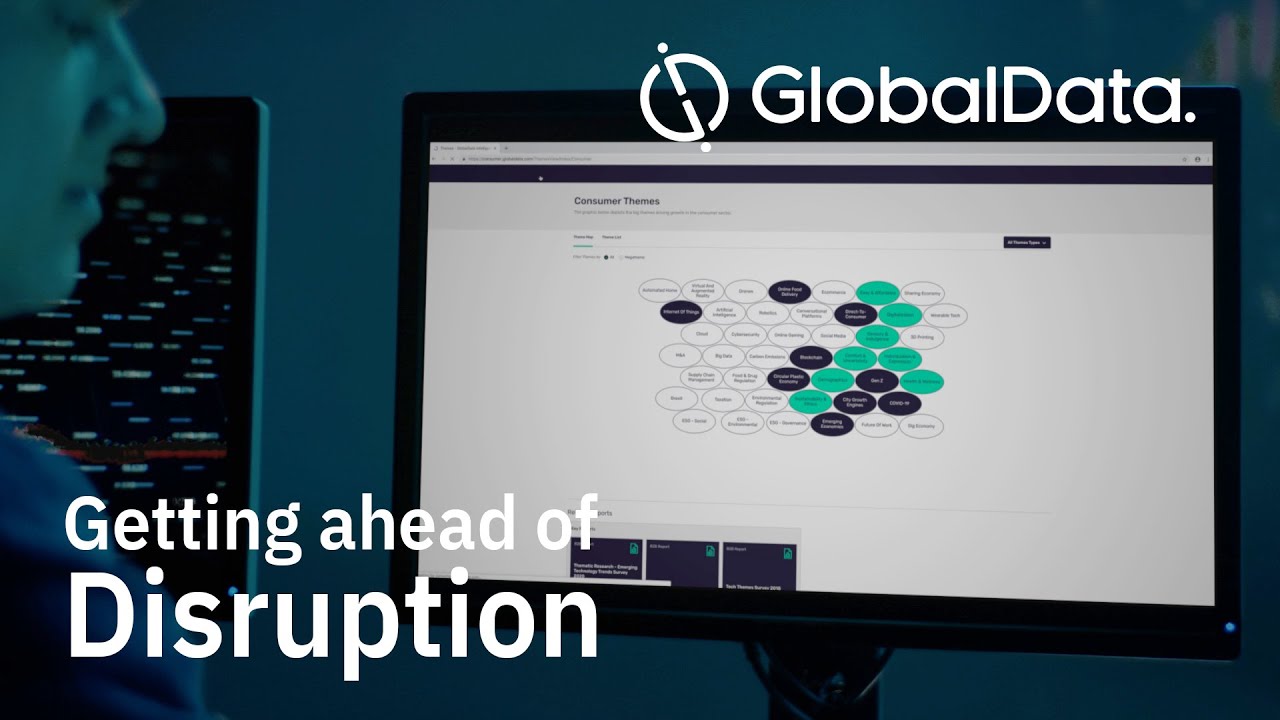Feature
IVF: AI ushers new paradigm for fertility medicine
In the US, the use of AI in IVF is of increasing importance as treatment cost and utilisation continues to rise, writes Ross Law.

Future Fertility is focused on using AI for eggs analysis but would like to use the technology to further influence the IVF lifecycle in future. Credit: Rohane Hamilton / Shutterstock
The American Society for Reproductive Medicine (ASRM) found that babies born from IVF rose to 91,771 in 2022, up from 89,208 in 2021. The increase means that 2.5% of all births in the US are a result of successful assisted reproductive technology (ART) cycles.
With the use of IVF in the US continuing to rise, and the cost of a single IVF cycle being estimated to cost between $15,000 and $30,000, selecting eggs with the best chances of reproductive success is of critical importance. The average number of cycles that are needed to become pregnant from IVF is 2.5, meaning the average cost of IVF treatment can be even higher.
Past research has found that AI has the potential to influence the optimisation and personalisation of key steps in IVF, including cycle monitoring, induction of oocyte (egg) maturation, and selection of the most competent gametes and embryos, to improve the overall efficacy and safety of ART.
AI’s role in determining egg quality
Future Fertility’s AI technology makes use of a personalised medicine paradigm to provide customised assessment of oocyte quality for individual patients.
“After a patient’s eggs are retrieved, an embryologist inspects the eggs under a microscope. They capture images of the eggs, which are instantly evaluated by our AI software to provide feedback on each egg’s potential to achieve future reproductive outcomes,” says Future Fertility CEO Christy Prada.
The company has so far two products focused on this area, the first of which is tailored towards egg freezing.
There exists a standard of care in assessing embryo quality with the Gardner grading system, which quantifies three characteristics of embryo morphology: expansion; trophectoderm quality; and inner cell mass (ICM) quality.
However, if a patient freezes their eggs, no comparable system exists to assess egg quality and understand if enough good quality eggs were captured to give individuals the best chance of success when they return to utilise their eggs for an attempted live birth in future.
“It's important to understand your chances of success at the retrieval stage, because as you get older, the egg quality and quantity declines over time,” says Prada.
“Therefore, having access to their personalised egg quality information early on is extremely valuable for egg freezing patients so they can better plan for the future and determine if additional freezing cycles are required to meet their family planning goals.”
Future Fertility’s second product, Magenta, is also about determining egg quality, but is used with patients who are actively going through the IVF process.
According to Prada, researchers have tried to correlate the visual dysmorphism of eggs with their quality, but these dysmorphisms have not been shown to definitively correlate with the successful development of an egg into an embryo.
“This is why oocyte evaluation is the perfect application for AI. Our model has learned patterns and features from over 150,000 oocyte images and their reproductive outcomes that help it to determine which features are most important as the egg develops into an embryo,” explains Prada.
Total annual production
“More specifically, we assess the egg’s likelihood of reaching the blastocyst embryo stage, which is a day five embryo, as this is the stage at which the embryo is suitable to be transferred to the uterus.”
Clarity over IVF failure
If an attempted IVF cycle fails, Future Fertility can assess what role the egg quality played in the outcome.
“Without an AI tool like Magenta, this is largely guesswork, and assumptions are made based on the patient’s age alone, which doesn’t take into account their personal health factors,” says Prada.
“For example, physicians may assume that younger patients have high-quality eggs, but that is not always the case. Seeing the Magenta results enables them to address egg quality issues earlier on in their treatment.”
For IVF, once a patient’s eggs are imaged, embryologists can use Future Fertility’s technology to undertake an assessment and create reports based on the AI.
The physician can look at the reports through our web application, and then those reports can be shared with a patient
Future Fertility CEO Christy Prada

Phillip Day. Credit: Scotgold Resources
Within the report, each egg is given a quality score out of ten, which is correlated to the egg’s likelihood of developing into an early-stage embryo.
If the Magenta AI report shows that egg quality is high for a given patient, this helps to rule out the egg as the reason for a failed cycle, enabling the physician to optimise the next cycle’s treatment plan towards approaches that may address sperm quality or other factors that could have caused the cycle to fail.
When IVF cycles are not working for a patient, Prada notes that while there's not always going to be one clear answer based on the Magenta report, and that it is going to depend on the context of other potential variables, it can serve as a beneficial counselling tool to help physicians work through potentially difficult conversations with patients about their options surrounding the IVF route for conception.
Looking ahead
Prada notes that within the AI IVF industry, a lot of players are focused on different points along the fertility journey, and once they have an initial product, they wonder how they can expand and apply AI to have an additional impact on the process.
“We have other innovations in our pipeline, where we're looking at other things along that journey and considering where else we can use AI to add value to decision making beyond egg quality,” says Prada.
She says that similar to egg quality, when trying to understand endometrial receptivity, which is a factor at the end of the IVF process, there is also an unclear standard of care regarding how that receptivity is assessed.
“With the endometrium, while there are some approaches to measurement in place, they are somewhat vague and vary from region to region,” says Prada.
“There is a great opportunity to leverage AI to standardise this approach, remove subjectivity, and better understand what impacts endometrial receptivity to inform treatment decisions.”
In addition, with AI, Prada believes that as a tool, the technology is opening doors for different areas of research and pinpointing the role eggs play in success.
We have done some other recent research where we can not only predict whether or not an egg will become a blastocyst, but also predict whether or not that egg is genetically normal or not
Future Fertility CEO Christy Prada

Caption. Credit:
Preimplantation genetic testing for aneuploidy (PGT-A) – to determine occurrences in which one or more extra or missing chromosomes exist within a cell or organism – is the current form of test being done to evaluate normality of embryos and to assess whether they may have abnormalities that could prevent them from developing into a baby.
“We've been able to prove out with our research and by adapting our technology, to predict to a different endpoint, which is chromosomal normality, so not just blastocyst formation, but chromosomally normal blastocyst formation,” says Prada.
“We can now better understand the impact that the egg plays, and the thing to know here is that, historically, it's thought that the maternal factor is what has a bigger influence on genetic normality of an embryo. As we've been able to layer that on and understand that with our technology, it starts to prove out the thesis that the egg will perhaps contribute a little more to genetic abnormalities or normalities than previously understood.”
The other thing Prada states that Future Fertility plans to do over time with its egg quality tools, and the potential later development of an endometrium solution, is to stitch together this information and understand how these aspects align with one another.
Prada concludes: “Are we able to improve upon decision making even more by understanding the variables at different time points and having that connected information?”
In improving outcomes for patients undergoing IVF treatment, it appears that the application of AI as a precision medicine approach is set to continue expanding over time. As a reproducible, non-invasive technique, AI supports greater certainty in determining the viability of eggs, the earliest stage in the fertility process, and holds the potential to mitigate patient spend in their journey towards ART conception.
RPM for cancer patients
The National Cancer Institute (NCI) forecasts that over two million new cancer cases will diagnosed in the US in 2024.
With a large variety of types of cancer and even a larger variety of the types of therapy, cancer care is particularly complicated, with a complex ecosystem of providers, patient symptoms, and myriad moving parts that can affect patients.
“It's therefore imperative for physicians to have as much access to patients as possible,” says Veris Health chief operating officer Brian deGuzman.
Veris has created a cancer care platform in the form of a smartphone app that enables patients to have continuous access to their care teams, thereby allowing healthcare providers to fill in a lot of the gaps that cancer patients used to have.
According to deGuzman, studies have shown that RPM and patient-reported outcomes improve cancer care.
“In particular, the process improves medium and long term-survival rates, reduces hospital admissions, and improves patient treatment by staying on treatment longer and engaging them more tightly with their providers,” says deGuzman.
The Veris platform allows for symptom reporting so healthcare teams can monitor patients’ vital signs, and there is a family application that allows for patients to invite family and close friends or caregivers to participate in their care and monitor them.
“There's also a clinician portal, which allows clinicians to have continuous access to patients’ vital signs and symptom reporting anytime they want and anytime the patients report them,” says deGuzman.
“It allows us to have this virtual care provision that improves the connectivity between patients and the providers and fills a lot of the gaps during times they weren't being seen by their healthcare provider in between visits for chemotherapy and otherwise,” he explains.
Having these provisions available in an app means that cancer patients have a more continuous care component to make them feel less alone during their experience of the disease.
“If we have the ability to monitor patients’ vitals like heart rate, blood pressure, and oxygen saturation, it gives clinicians a much broader and longitudinal view of the patients and where they're at just by their vital sign monitoring on a daily or twice daily basis, rather than once every one or two weeks when they come in for their therapy,” says deGuzman.
Taking the example of patients being to report their temperature in Veris’s app, deGuzman notes that one of the most common complications cancer patients undergoing chemotherapy can experience is neutropenic fever, a situation in which chemotherapeutic agents drive down their white blood cell count, resulting in an immunocompromised state.
“These patients are at high risk for developing infections, which oftentimes can result in fever,” says deGuzman.
“It's therefore important for physicians to see those trends in patients’ temperature so they can have a much earlier signal that a patient may be in trouble than if they wait for the fever to develop to such a point where they start to get symptoms. By that time, the infection has taken hold, meaning that patients are more difficult to treat and that outcomes are much worse.”
Caption. Credit:
In the form of apps, RPM can encompass a broad range of support. In this format, RPM facilitates interventional approaches and continued communication between patient and practitioner, presenting the opportunity for patients to engage with their healthcare conditions and to manage them, both on a psychological and physiological level, more effectively.
Chinese dominance and Western complacence
For three decades, the Chinese Government has had a strategic vision for the REEs industry and it now dominates the global supply chain. In 2021, Chinese mines produced 168,000t of rare earths, almost 60% of total global mining output, according to the US Geological Survey. In 2020, the country also produced 85% of the world’s rare earth refined products, according to Roskill.
About 70% of global production is consumed within the Chinese domestic market. Chinese production at both the mining and refined stages is controlled by quotas assigned to six state-owned enterprises, which are highly integrated throughout the REEs supply chain.
Total magnet rare earth oxide demand is forecast to jump at a compound annual growth rate (CAGR) of 9.7% between 2021 and 2030, while REE prices are projected to surge at a CAGR of between 5.6% and 9.9% over the same period, according to Adamas Intelligence, a research and advisory firm.
The Western world does not have an integrated REEs supply chain in the same way that China does because it simply did not consider it important until the post-Covid era. However, the pandemic showed the significance of more localised supply chains. Temporary trade restrictions and shortages of pharmaceuticals, critical medical supplies and other products highlighted the weakness of complicated, globalised supply chains. The Western world has become too complacent in allowing rare earth production to be outsourced to China.
